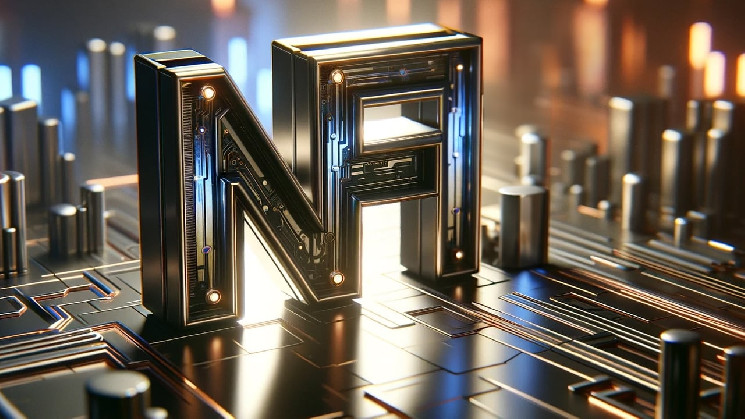Many have already declared the death of NFTs, and in part they are right. Amid the intense NFT hype cycle, we saw massive appreciation and sales, such as Beeple’s ‘The 5000 Days’ collection, which sold for a whopping $69.3 million. However, unsupported by anything other than the hype, the market collapsed, with the number of active wallets buying or selling an NFT between 2021 and 2023 declining by 88%.
The following is an opinion article written by Tyler Adams, Chief Executive Officer and co-founder of COZ, a Web3 software development community developing groundbreaking blockchain applications.
Decoupling NFTs from the real utility had an impact on overall sales, as these digital collectibles have no tangible purpose beyond their digital form. They are redefining asset ownership by shifting it entirely into the digital sphere, changing the post-purchase relationship and at its peak leading to rising prices for standard JPEG images, driven primarily by speculation.
Furthermore, this gap between utility and value undermined the ability of those in the industry to establish trust among the broader population, with the subsequent market crash reinforcing what quickly became a natural mistrust of the NFT community. Meanwhile, in the blockchain space, security challenges associated with smart contract development pose additional barriers to widespread adoption. All of this culminates in raising a critical question: “What real value do these digital assets have, beyond speculation?”
Going beyond the JPEG with NFIs
Rather than being doomed to oblivion, NFTs can instead be seen as a crucial stepping stone, setting in motion a new wave of technological innovation: non-fungible items (NFIs). This emerging technology represents a tangible asset that is cryptographically linked to a digital twin, providing a secure connection between the physical and digital domains. NFIs serve as a gateway for widespread adoption of Web3, allowing people to prove ownership of a physical object while authorizing certain actions, both on-chain and off-chain.
Unlike NFTs traded on a blockchain, NFI technology advances by using advanced cryptography for authentication, embedding an inaccessible secret key into physical items so that individual NFIs can generate unique “proofs” specific to are specific to them. This guarantees verifiable ownership of items, ensures their legitimacy, and allows creators to receive royalties from the online trade of their work.
Applying this technology enhancement to ownership creates endless possibilities for real-world use cases and industries, including brand and post-purchase activations, customer experiences (unique access to events or clubs), proof of physical ownership, and streamlined verifications.
NFIs – NFTs with real-world examples
As an example of what is possible through NFI technology, let’s look at luxury goods. With the luxury fashion industry expecting a significant expansion of the resale market, with a projected compound annual growth rate (CAGR) of 9.6% and an estimated market size of $52 billion by 2026, brands are increasingly affected by the widespread circulation of counterfeit or infringing goods. This underlines the current and pressing challenges posed by unauthorized sales.
NFIs are revolutionizing this sector by integrating blockchain technology to build a strong system for confirming ownership and authenticity and presenting a promising ally for luxury identification.
High-end brands are starting to pay attention. Dior has played a pivotal role in integrating NFI technology with the debut of Web3 sneakers. A physical chip embedded in the shoes allows users to retrieve an authentication certificate, which is stored on a blockchain that proves its authenticity and allows ownership verification. This technology has given Dior a unique USP: offering digitally scarce, limited-edition sneakers while ensuring transparency and traceability for buyers.
NFI technologies will become a crucial factor in maintaining customer loyalty and the appeal of ‘exclusivity’ among consumers interested in high-end brands, such as Rolex. Today, when a luxury Rolex timepiece breaks and requires new parts, cheaper, non-genuine Rolex parts or elements are often used by jewelers and these parts can be resold on the market at face value. This leaves customers wondering whether their second-hand Rolex purchase is ‘the real deal’. By providing an auditable record of repairs and provenance, NFIs can solve this problem.
Reshaping ownership as we know it
NFIs broaden the scope of artistic exploration for users as they can be adapted to work with a variety of art forms, from traditional physical paintings to avant-garde digital pieces, increasing authenticity and traceability and ultimately increasing overall intrinsic value .
Other possible NFI and arts initiatives could include enhancing outdoor street art, creating individual plaques for murals to provide more detail about the artist and the artwork. As seen at the Denver Walls Street Mural Festival, these plaques can feature QR codes, allowing visitors to undertake a technically enhanced exploration of the artworks. By scanning these codes with their mobile phones, visitors could access a map of all the art installations in the city and insight into the individual artists and murals, providing an engaging experience.
The merger of empires
The above is just a taste of what is possible through the innovative application of NFIs. While the crypto landscape continues to overcome its challenges, widespread adoption remains a daunting task. NFTs advanced the paradigm, but the real opportunities lie at the intersection of both the digital and physical worlds. The emergence of NFIs represents an evolutionary step. By taking the best features of NFTs and connecting them to our physical reality, non-fungible items are poised to have a much deeper and more lasting impact on the way we integrate technology into our daily lives.
What do you think about the concept of NFI technologies? Let us know what you think about this topic in the comments below.

